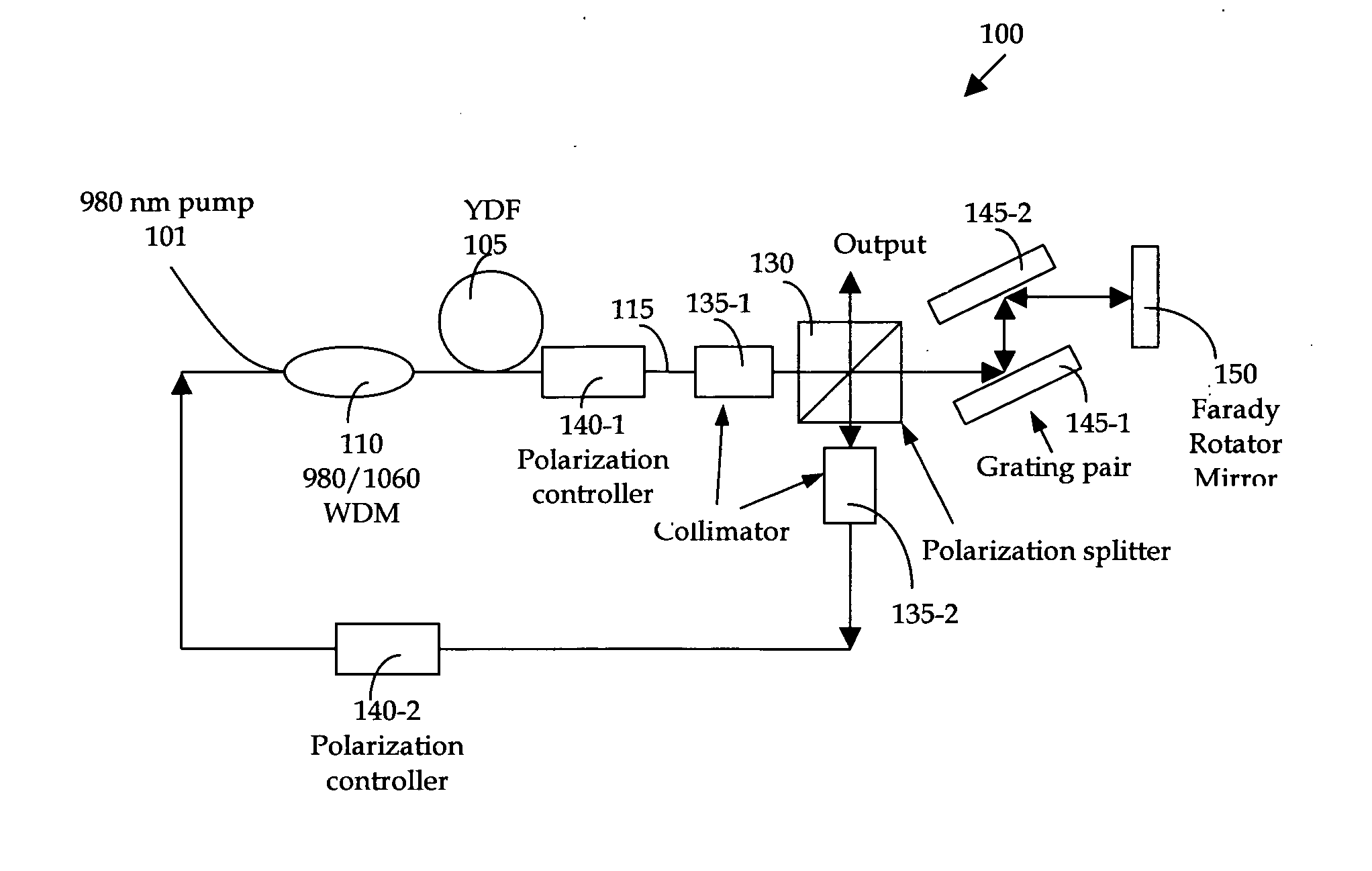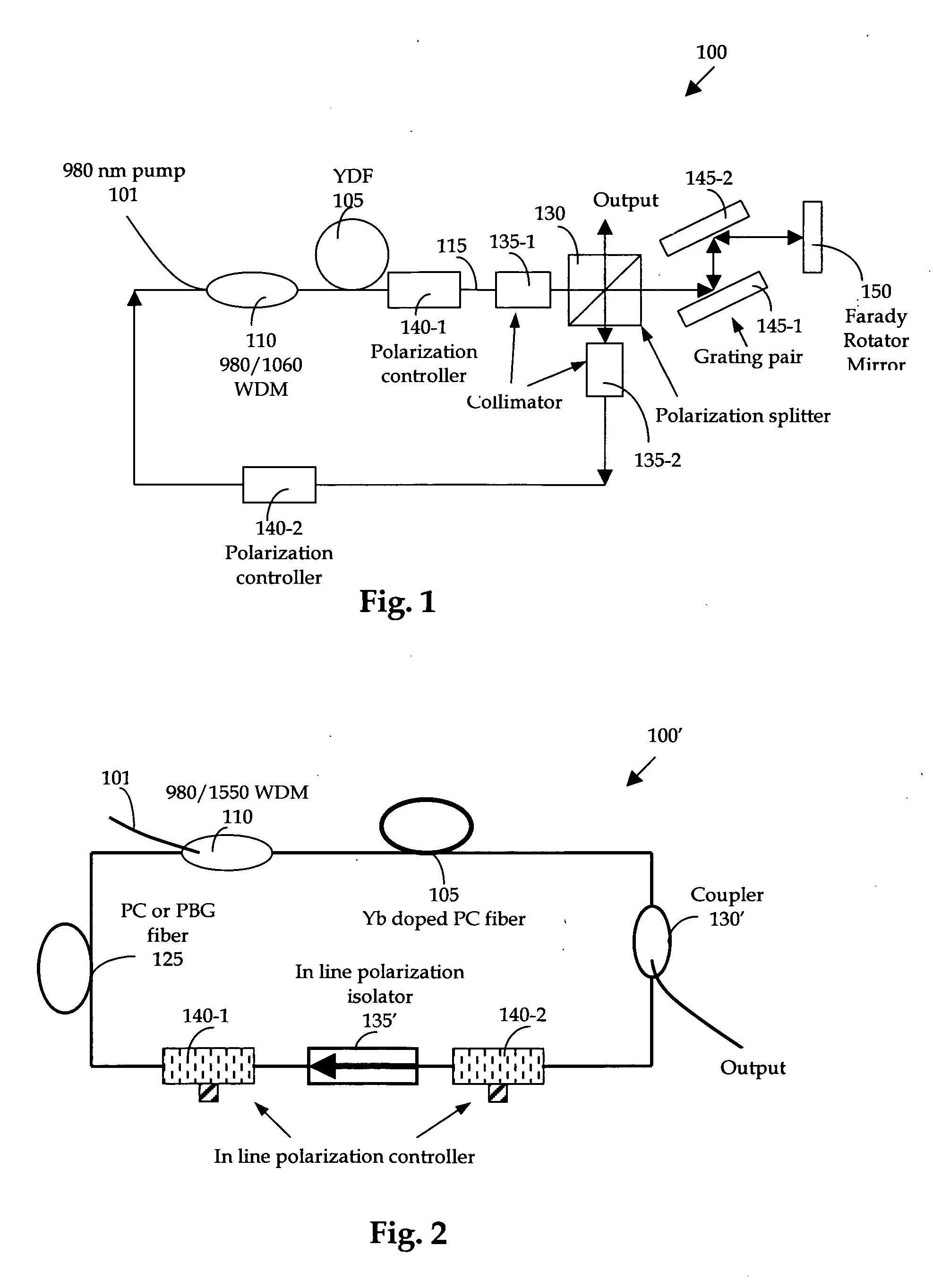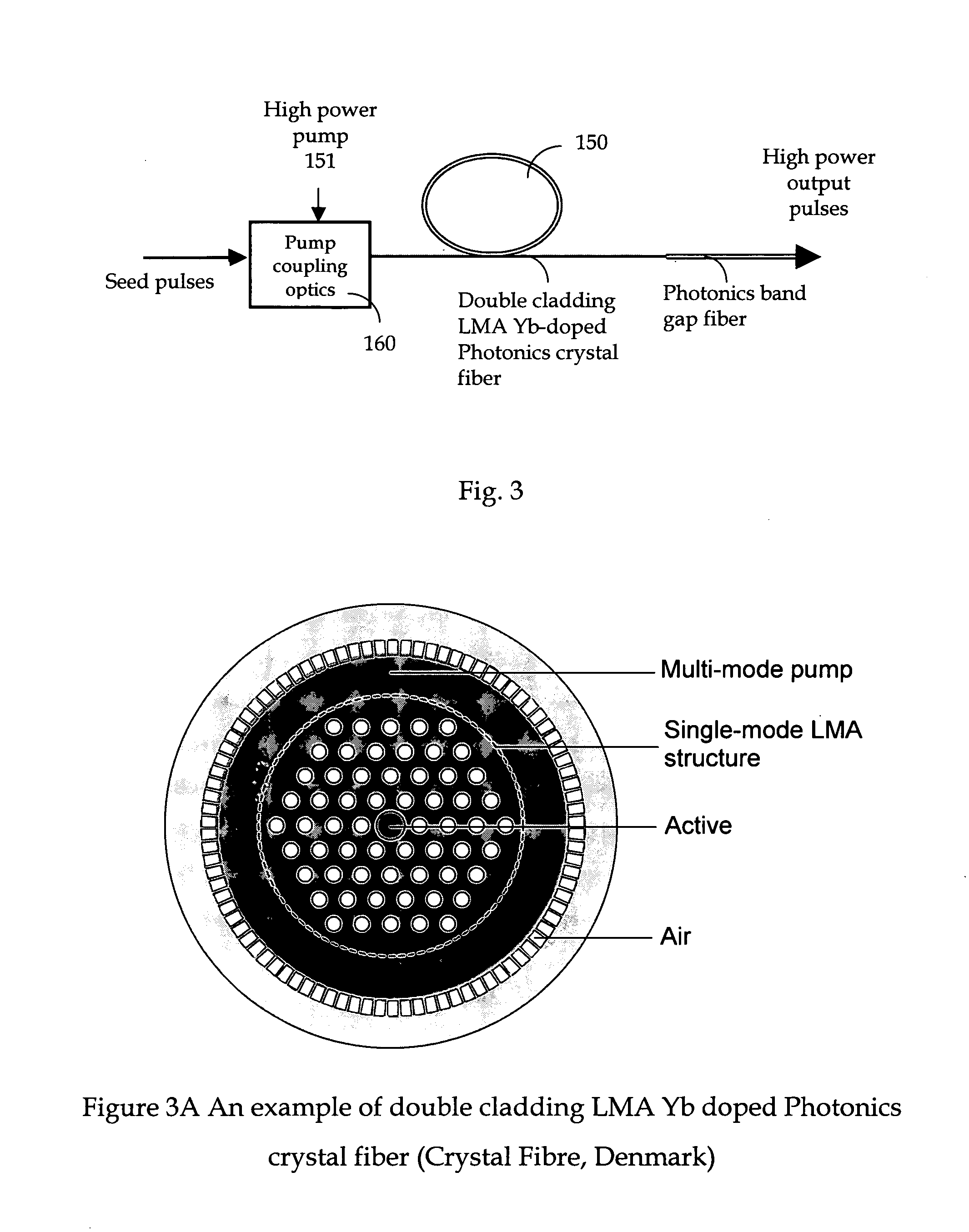All fiber based short pulse amplification at one micron
a modelocked fiber laser and all fiber technology, applied in the field of all fiber based short pulse amplification at one micron, can solve the problems of difficult to achieve the practical application of ultra-short pulse and high power lasers, and the distortion of pulse shapes, and the practical usefulness of ultra-short high power lasers is often hindered
- Summary
- Abstract
- Description
- Claims
- Application Information
AI Technical Summary
Benefits of technology
Problems solved by technology
Method used
Image
Examples
Embodiment Construction
[0025] Referring to FIG. 1 for a schematic diagram of a nonlinear polarization pulse-shaping mode locked fiber laser 100 of this invention. The fiber laser is a ring structure laser that includes a gain medium Ytterbium (Yb) doped fiber (YDF) 105, a fist and a second collimator 135-1 and 135-2 respectively, a first and second polarization controllers 140-1 and 140-2 respectively, a 980 / 1550 WDM coupler 110, and an output beam splitter 130. The output beam splitter 130 is coupled to a pair of gratings 145-1 and 145-2 coupled to a Faraday rotator mirror 150. A half-meter of YDF 105 is used in the fiber laser as a gain medium and is used to amplify and compress the pulse width. The fiber has a high doping concentration, e.g., 600 dB / m at 976 nm, with a dispersion of −55 ps / nm / km. A 980 nm high power pump laser diode 101 coupled through a wavelength division multiplexer 110 is used to pump the YDF 105 to amplify the pulses circulating in the cavity. The rest of the cavity comprising a s...
PUM
 Login to View More
Login to View More Abstract
Description
Claims
Application Information
 Login to View More
Login to View More - R&D
- Intellectual Property
- Life Sciences
- Materials
- Tech Scout
- Unparalleled Data Quality
- Higher Quality Content
- 60% Fewer Hallucinations
Browse by: Latest US Patents, China's latest patents, Technical Efficacy Thesaurus, Application Domain, Technology Topic, Popular Technical Reports.
© 2025 PatSnap. All rights reserved.Legal|Privacy policy|Modern Slavery Act Transparency Statement|Sitemap|About US| Contact US: help@patsnap.com



